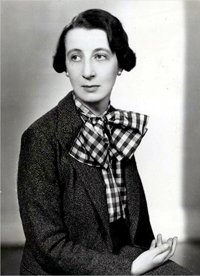
 Back in the 1930s and 40s, Josephine Tey was one of the UK’s most celebrated playwrights and novelists. How times change. Nowadays it’s dedicated aficionados of Golden Age detective fiction who read her, and often only a couple of novels. Yet at least one of these, The Daughter of Time, is regularly found on lists of the top 10 or 20 crime fiction books of all time. For that reason alone, this author deserves to be more widely read and celebrated, but her whole body of work is worth rediscovering.
Back in the 1930s and 40s, Josephine Tey was one of the UK’s most celebrated playwrights and novelists. How times change. Nowadays it’s dedicated aficionados of Golden Age detective fiction who read her, and often only a couple of novels. Yet at least one of these, The Daughter of Time, is regularly found on lists of the top 10 or 20 crime fiction books of all time. For that reason alone, this author deserves to be more widely read and celebrated, but her whole body of work is worth rediscovering.
 The real Josephine Tey
The real Josephine Tey
We only know the bare bones about her life, however. Josephine Tey was one of the pseudonyms used by the writer born Elizabeth Mackintosh in 1896 at Inverness. Gordon Daviot is the other. She grew up in Scotland, trained as a physical education teacher, never married and tended to her invalid father for many years before embarking upon her literary career. She was a great friend of John Gielgud, Edith Evans and other famous actors of the time, but she remained almost obsessively private, keeping her final disease a secret even from those closest to her. Her death in 1952 was overshadowed by the state funeral of George VI. She left all of her money to the National Trust, and no hint of any scandal or love affair behind her.
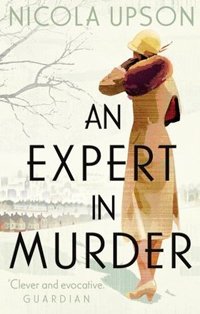 Josephine Tey may be a source of frustration to biographers but she presents the ideal blank canvas upon which a fiction writer can hang their own thoughts and interpretations. Nicola Upson has done just that in her crime series featuring Josephine Tey as a rather reluctant amateur detective, starting with An Expert in Murder published by Faber and Faber in 2008. Upson initially tried to write a biography of Tey but soon realised that she could do better justice to her subject by blending fact with fiction, life story with an intriguing mystery in its own right. The filling in of biographical gaps may not please all readers, but this well researched and believable series does give a new lease of life to an author who might otherwise be out of print.
Josephine Tey may be a source of frustration to biographers but she presents the ideal blank canvas upon which a fiction writer can hang their own thoughts and interpretations. Nicola Upson has done just that in her crime series featuring Josephine Tey as a rather reluctant amateur detective, starting with An Expert in Murder published by Faber and Faber in 2008. Upson initially tried to write a biography of Tey but soon realised that she could do better justice to her subject by blending fact with fiction, life story with an intriguing mystery in its own right. The filling in of biographical gaps may not please all readers, but this well researched and believable series does give a new lease of life to an author who might otherwise be out of print.
A small body of work
For readers who prefer to discover this modest grande dame of the Golden Age first hand, Tey left behind a relatively small body of work – 11 novels in total, eight of which were mysteries, written over a period of 23 years. Six of these feature Inspector Alan Grant (however briefly), while two are standalones. They are all relatively short and each is very different. There is no predictable formula, not even in the Alan Grant series. In fact, the detective often recedes into the background, as if the author was afraid of boring herself and her audience with a constantly recurring character. So we never quite know what to expect with a Josephine Tey novel, other than wit, a keen eye for human foibles and an excellent ear for dialogue.
Ultimately, it’s this sense of fun and very fluid style which makes her such a timeless author. Reading her books feels like you are chatting with a clever, witty friend – she was most certainly the Jane Austen of her day. Despite some inevitable prejudices and snobbish attitudes of her period, her characters’ concerns feel contemporary, their mental make-up is so familiar, and the themes she addresses – fame, loneliness, cruelty, manipulation and herd mentality – are still with us today.
Here are five of Josephine Tey’s best novels, in order of appearance…
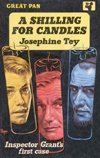 A Shilling for Candles (1936)
A Shilling for Candles (1936)
Christine Clay is a famous actress of humble origins found dead on a beach. The strange title comes from a surprising statement in her will, bequeathing to her hitherto unknown brother ‘a shilling for candles’. Inspector Grant – slim, dapper, not looking like a policeman at all – is sent from London to investigate the case. This is the second appearance of Tey’s detective. Grant is independently wealthy yet passionate about police work, has never failed to solve a case, yet shares none of the extravagance and foppishness of Lord Peter Wimsey, for instance. The novel was very loosely adapted by Hitchcock in 1937 as Young and Innocent. Coincidentally, the historical meeting between Tey and Hitchcock forms the basis for Nicola Upson’s fourth novel Fear in the Sunlight.
Even in this early novel, we can find the trademark dry wit and underlying sadness in this book about the loneliness and fleeting nature of fame when she writes: “As far as anyone could see, no hearts were breaking because Christine Clay was no more. The world dusted off its blacks and hoped for invitations to the funeral.”
Buy now on Amazon
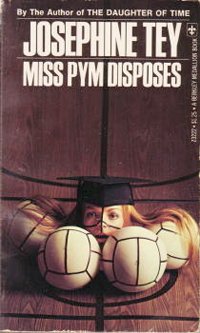 Miss Pym Disposes (1946)
Miss Pym Disposes (1946)
In this standalone novel, Miss Pym is almost an accidental celebrity following the publication of her book on popular psychology. Her well-ordered though somewhat lonely life changes when she gives a lecture at a physical education college at the request of a former school friend. She originally intends to stay just one day, but keeps postponing her departure as she gets caught up in the seeming healthy normality of the place and its students, which of course hides rivalries, seething resentments and ultimately evil intent. This is more of a school story than a traditional crime story, as the crime itself only occurs about three quarters of the way through and the ending is somewhat predictable. What it does present, however, is a moral dilemma for Miss Pym – a character through which we’d like to believe we can catch a glimpse of the author. It’s another tale told with keen observation and the self-deprecating humour we’ve come to think of as quintessentially British, but this is not a jolly hockey sticks type of book – it is full of nuance and psychologically subtle.
Buy now on Amazon
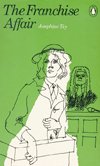 The Franchise Affair (1948)
The Franchise Affair (1948)
This book, based on a real case from the 18th century but given a modern twist, only briefly mentions Inspector Grant. The main focus is on the small town solicitor Robert Blair – another character set in his ways, seemingly content, yet rather lonely and vaguely wondering if this is all there is to life. He is asked to help Marion Sharpe, described as “…a skinny woman of 40 who lives with a rude old mother in an ugly old house, and needs legal advice on occasion like anyone else.”
These two reclusive and not immediately likeable outsiders in the village community are accused of kidnapping, imprisoning and beating a 15-year-old girl. The girl describes their car, house and the room she was allegedly imprisoned in with alarming accuracy – what motive could she possibly have to be making it all up? Another complex story, which can be read at multiple levels, addressing issues such as prejudice, the danger of not fitting in, persecution through the public media and hot-headed vigilantism.
Buy now on Amazon
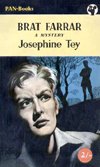 Brat Farrar (1949)
Brat Farrar (1949)
Another standalone novel, Brat Farrar addresses the phenomenon of the impostor heir. The Ashby youngsters – a son and three daughters – are eking out a living by breeding horses and giving riding lessons on the family estate of Latchetts, overseen by their very capable and loving aunt Bee. Simon Ashby is fast approaching his 21st birthday and stands to inherit a fortune belonging to his mother’s side of the family. But then a young man with a strong family resemblance appears and claims to be Simon’s long-lost twin brother, Patrick, who disappeared at the age of 13. He was thought to have committed suicide by drowning, but his body was never found. However, we know from the start that this is not Patrick, but Brat Farrar, a young orphan recently arrived from the US, who has agreed to participate in a scam organised by an old childhood friend of the Ashbys. We thus become privy to a very unusual viewpoint – that of the con artist himself. Brat suffers from a real ethical dilemma as he starts to suspect that the real Patrick was the victim of foul play and that, no matter what the outcome, he is going to deeply hurt this family that he would dearly love to call his own. This book, with its discussion of landed gentry and class privilege, and its almost wholescale blanking of World War II, is perhaps the most dated of Tey’s books. Yet the charm, humour and details of family life, the vivid characters and dialogue, make it highly readable even today.
Buy now on Amazon
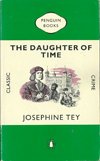 The Daughter of Time (1951)
The Daughter of Time (1951)
This is the best-known of Tey’s novels, its popularity boosted recently by the discovery of Richard III’s skeleton underneath a car park in Leicester. It represents another unusual take on detective fiction, as Inspector Grant is almost immobile on a hospital bed and relying purely on his intellect and the researching powers of a few willing nurses and friends to solve a historical murder mystery. Was Richard III really a cunning, evil monster who did away with half of his family in order to become king, or is Alan Grant right to be convinced that this was not the face of a villain? While it is hard to condone Grant’s over-reliance on physiognomy as a sound principle for psychology, his obsession and relentless hunt for historical clues is quite infectious. It’s a book which draws you in, regardless of how much you know about English history or whether you love Shakespeare. The conclusion may be well known by now, but it remains a very well constructed story, which also addresses the deeper issue of how people often prefer their own fixed representation of reality, even when it flies in the face of all evidence. Along the way, you will find plenty of Tey’s sharp tongue and wicked humour. Here she is, for example, mocking Grant’s reading matter in hospital (a sly dig at her contemporaries):
“The Sweat and the Furrow was Silas Weekley being earthy and spade-conscious all over 700 pages… an elegant affair of Edwardian curlicues and Baroque nonsense, entitled Bells on Her Toes, which was Rupert Rouge being arch about vice… a red gun-flash across a night-green cover was Oscar Oakley’s latest. Toughs talking out of the corners of their mouths in synthetic American… The Case of the Missing Tin-opener, by John James Mark, had three errors of procedure in the first two pages.”
No wonder poor Grant would rather embark upon a historical puzzle!
Buy now on Amazon
Oxford City Press re-issued new hardback editions of all of the Josephine Tey novels in 2012, while Arrow, the paperback imprint of Random House, has new editions of her crime fiction. You can also find free online versions of most of her books and the Richard of Bordeaux play as part of the Project Gutenberg Australia on the University of Adelaide ebooks website. There are currently five crime novels by Nicola Upson featuring Josephine Tey and her friend Archie Penrose of the Scotland Yard, the latest being The Death of Lucy Kyte.






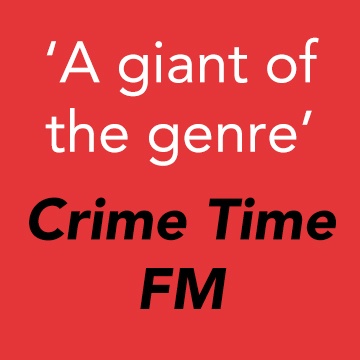


Jennifer Morag Henderson’s recent biography – ‘Josephine Tey: A Life’ is a much more reliable source than Nichola Upson’s novels. Upson has declared that her character of Josephine Tey is fictional so looking there for reliable information about the real Josephine Tey is a waste of time.
Henderson’s biography has been most thoroughly researched – like Tey she is a resident of Inverness and has insights into the life and character of Josephine Tey which have been denied to other writers who have attempted – and failed – to write a definitive biography of this most elusive writer. She has also had the assistance of Tey’s family in her work – so if any readers wish to know more about the real author behind the novels Henderson’s biography is most thoroughly recommended.
No, of course, we are not suggesting that Nicola Upson’s novels are anything like reliable biographies of Josephine Tey. They are merely inspired by the author and good entertainment value! Thanks for the suggested biography – will be looking it up, given my passion for Tey.